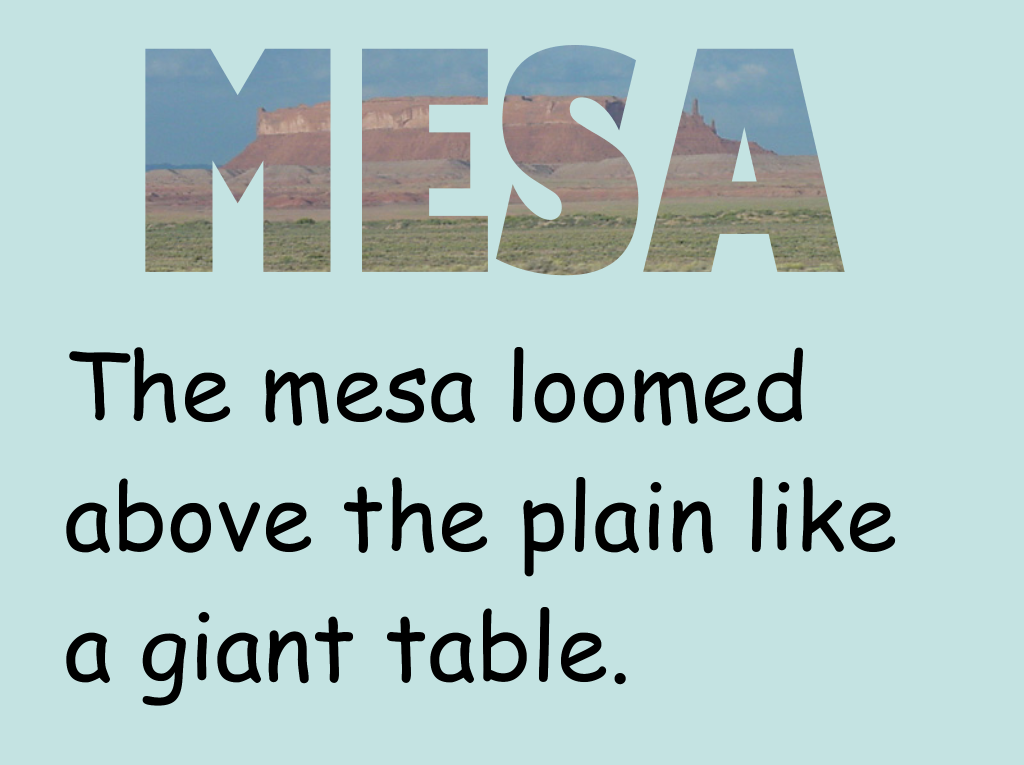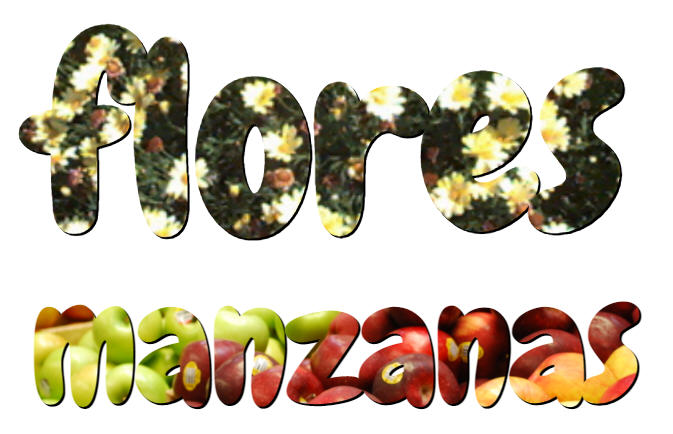
Students create visual vocabulary cards that fill a word with an image to provide a visual cue to the meaning of the term.

When a word is associated with something you can visualize, it is easy to remember. For example, think of the word pet. What do you see in your mind? Your dog or cat? Your aunt’s bird? The neighbor’s lizard? See how fast that picture came into your mind? That is because that word is associated with something you can visualize.
When you are reading or learning new vocabulary, creating a picture in your mind can help you remember the meaning of the words. But the picture has to indicate the meaning of the word. To help students at your school better remember new vocabulary, your class will create a set of visual vocabulary trading cards.
Let your students know they are going to create their own set of Visual Vocabulary trading cards for a unit vocabulary list. Share a sample, or two, you have created.
Share the vocabulary list with your students. As a class, explore the meaning and spelling of each word. Provide definitions or have students research them on their own. Have students practice their fluency by writing sentences that contain the word. You may also want to find examples in the texts the students are currently reading.

Work together to explore the sentences the students have written for key words that can help you determine the meaning of the word. This models the strategy of using the context of a sentence to help decode unfamiliar vocabulary terms.
Depending on the level of your students, distribute vocabulary words to each student or divide them into small teams and assign terms. Each student, or team, should write, or locate, a definition for their assigned vocabulary word and brainstorm synonyms, and antonyms for it. Next have them write a sentence that uses the word in context.
Looking back at their definition and sentence, have students brainstorm ideas for pictures that represent the meaning of the word, or provide a visual clue to its meaning. Have students use a digital camera to try to capture their favorite image idea or search the Web to locate an appropriate image. Encourage them to use the copyright-friendly images at Pics4Learning.
Have students use a digital tool, like Wixie, to fill text with an image. If there is still room on the page, ask students to add a definition, sentence, and even synonyms, and antonyms.
Print student work to display in your clasroom or on your website. Digital tools, like Wixie, have print options, like trading cards, you can use to print multiple copies on the same sheet of paper so you can have students print, cut out the images, and trade them with the rest of the class so everyone has a complete set.
You may also want to print the page in color and full size to make it part of a word wall, or classroom vocabulary list. You may also want to collect all finished terms into one project that you can run as a slide show students can watch when they arrive at class in the morning.

The power is in students brainstorming, writing, and creating the visual terms because they internalize the meanings of the new words as they complete the design process.
Make this exercise part of a center activity in your classroom by posting new vocabulary by a computer station each week and asking students to work independently to create visual versions of each term.
Finding appropriate images will be easy for some terms and difficult for others. Use the time you spend introducing the terms assessing student knowledge and comprehension, so you can distribute terms appropriately and differentiate.
You can also check for understanding as students, or teams, write definitions and sentences. This will also help you identify any misconceptions and correct student thinking before it becomes ingrained. Their brainstorm of image ideas and their final choice will also provide opportunities for assessing fluency with the new terms.
Discuss the words together as a class. Ask for class feedback on which examples really work. You may also want students to reflect and self-assess on the success of their Cool Word to help them determine the meaning of the new vocabulary words.
Online Dictionary dictionary.com
Copyright-friendly Photographs pics4learning.com
Great Visual Vocabulary Flashcards insidestoryflashcards.com
Reading Theme
Vocabulary Acquisition and Use
6. Acquire and use accurately grade-appropriate general academic and domain-specific words and phrases (grades 3-7).
6. Creative Communicator
Students communicate clearly and express themselves creatively for a variety of purposes using the platforms, tools, styles, formats and digital media appropriate to their goals. Students:
a. choose the appropriate platforms and tools for meeting the desired objectives of their creation or communication.
b. create original works or responsibly repurpose or remix digital resources into new creations.
d. publish or present content that customizes the message and medium for their intended audiences.

Follow us on Instagram for daily inspiration

Create a thought web, cluster, flowchart, or other graphic organizer for a lesson
8 first projects to get students using technology
Creative, digital book reviews
Fun and powerful ideas with animated characters

Wixie
Share your ideas, imagination, and understanding through writing, art, voice, and video.

Rubric Maker
Create custom rubrics for your classroom.

Pics4Learning
A curated, copyright-friendly image library that is safe and free for education.

Wriddle
Write, record, and illustrate a sentence.

Get creative classroom ideas delivered straight to your inbox once a month.
Topics